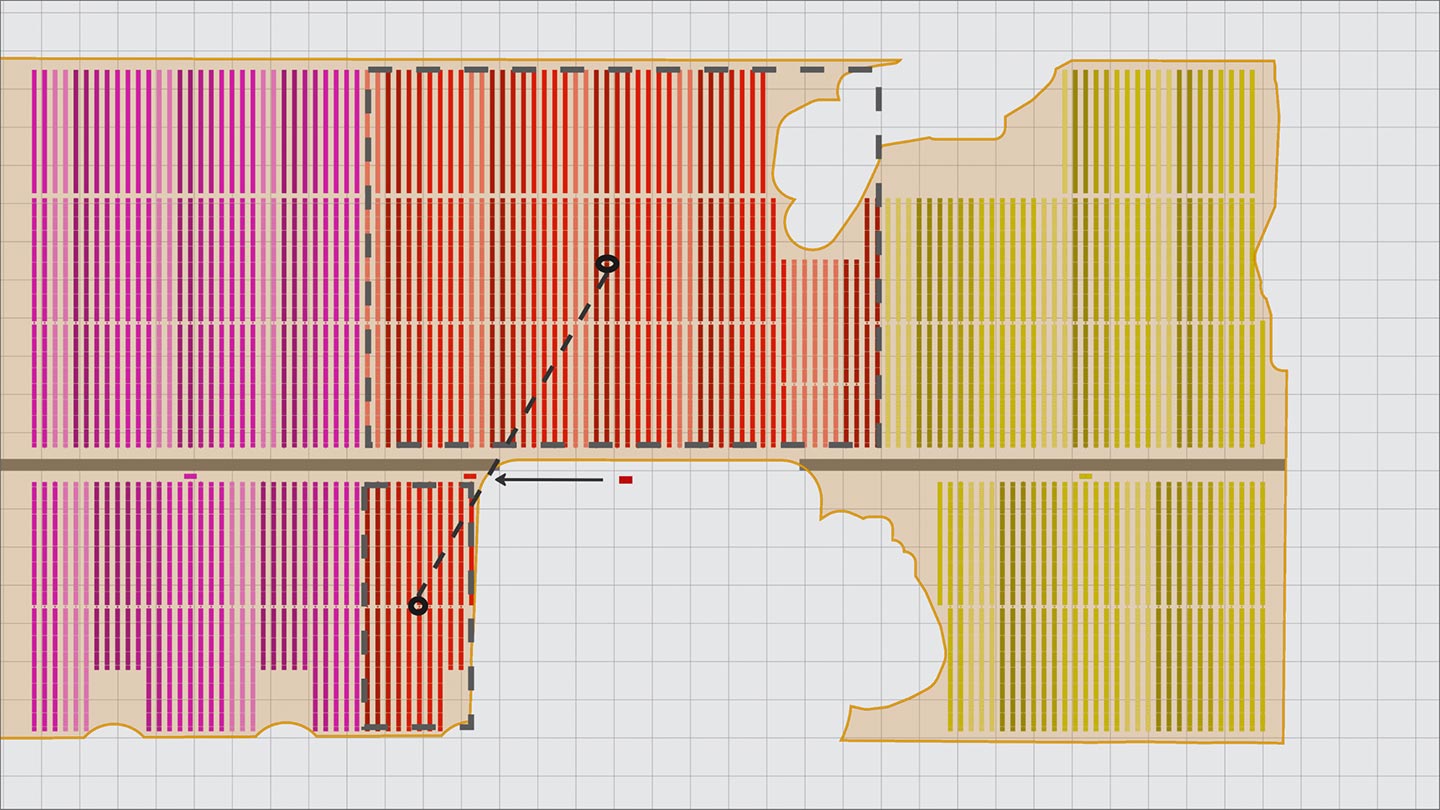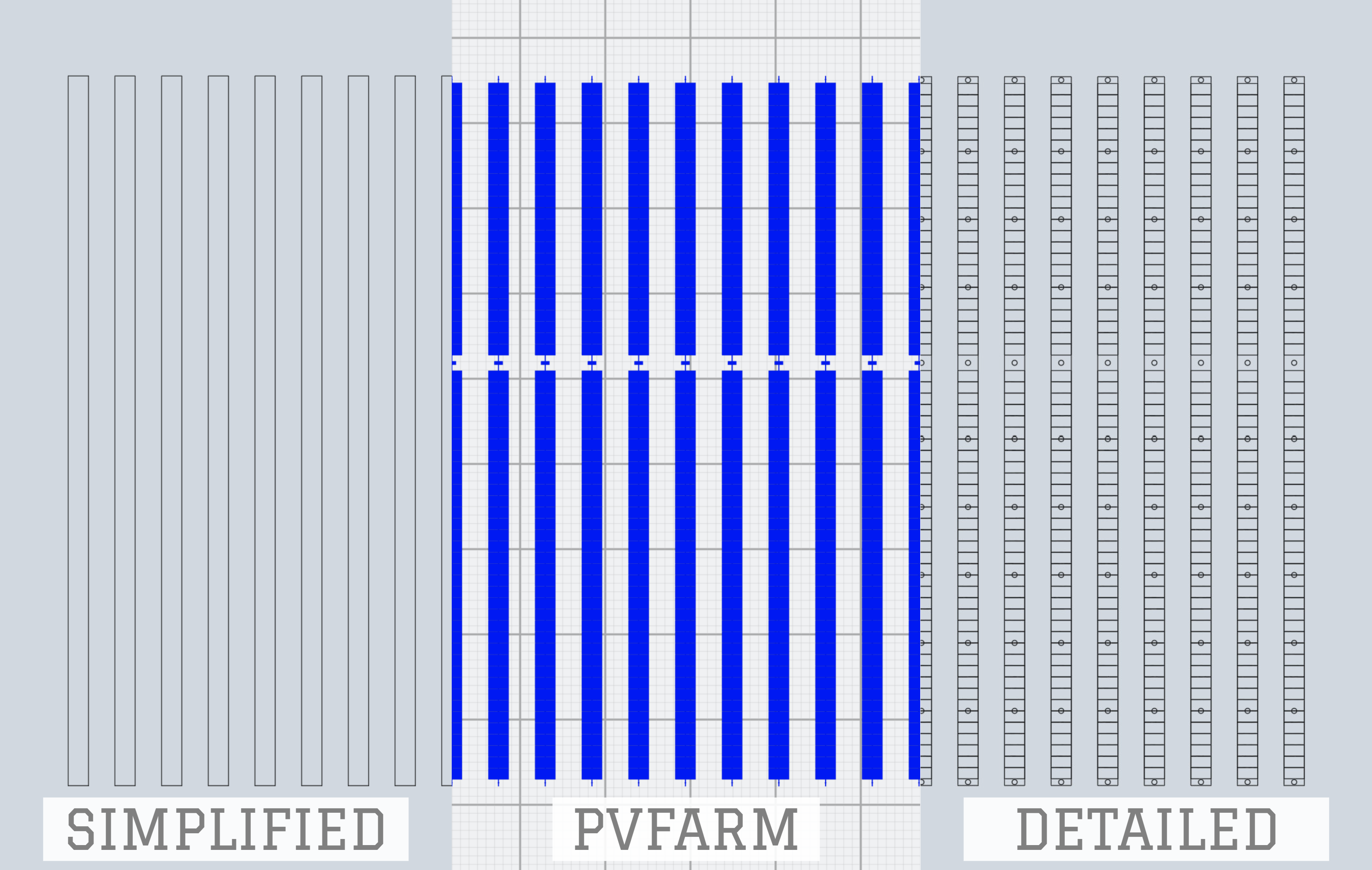Calculate LCOE Solar Software: How PVFARM Speeds Economic Evaluation and Improves Project Feasibility

Calculating LCOE Faster with Integrated Solar Software
For solar developers, EPCs, and investors, LCOE is the foundation of economic evaluation - shaping project feasibility, financing strategies and long-term profitability. Yet despite its importance, calculating LCOE has traditionally been a slow, fragmented, and error-prone process - often delaying critical design and investment decisions.
PVFARM transforms this process by integrating energy modeling, cost estimation, and financial analysis within a single, unified platform; enabling teams to evaluate project economics in real time.
What is LCOE and Why it Matters
According to the National Renewable Energy Laboratory (NREL), the Levelized Cost of Energy is the present value of the total cost of building and operating a power-generating system over its lifetime, divided by the total electricity it will produce.
A Simplified Version of the LCOE Equation:

More comprehensive models, such as those used in NREL’s System Advisor Model (SAM), include discount rate, capacity factor, and the fixed charge rate (FCR):

Key Inputs for the LCOE Equation:
- CAPEX – Capital cost (investment cost)
- FOM – Fixed annual operating cost
- VOM – Variable operating cost
- CF – Capacity factor
- FCR – Fixed charge rate (reflecting discount rate and financial structure)
Each of these inputs has a profound effect on a project’s generation cost and feasibility; therefore, the ability to quickly and accurately model them, determines whether a solar project is bankable or not.
The Challenge of Traditional LCOE Calculations
Historically, solar developers have relied on spreadsheets, static CAD models, and third-party financial tools to perform LCOE calculations. Each step required manual data transfers between engineering, finance, and operations teams - introducing discrepancies, delays, and version control issues that can easily undermine accuracy.
Traditional workflows present several core challenges:
- Disjointed Workflows: Layout, energy yield, and financial modeling are handled in separate tools such as CAD, PVSyst and SAM.
- Limited Visibility: Every assumption - from slope tolerance to tracker efficiency - affects cost and performance; yet these impacts aren’t dynamically reflected across tools.
- Slow Iteration: Each design change requires manual recalculation, slowing early feasibility analysis and extending the sales cycle.
- Market Sensitivity: As market trends push renewable energy technologies toward higher efficiency and lower cost per kilowatt hour, slow or inaccurate modeling limits competitiveness and responsiveness.
In short, conventional methods simply can’t keep pace with the speed and complexity of modern solar projects, especially those involving ground-mount PV systems, variable terrain and evolving project economics.
Fragmented Tools, Fragmented Results
As previously mentioned, LCOE calculations typically rely on data from multiple, disconnected sources, such as energy yield from PVSyst, financial assumptions from Excel or SAM, and civil costs from CAD or GIS. Because each dataset is built on different inputs and assumptions, inconsistencies can arise, which require time-consuming reconciliation. Any change, for instance, in layout, grading, or equipment, forces engineers to rework calculations manually.
As a result, LCOE modeling often happens too late in the design process, delaying investment and feasibility decisions that depend on accurate cost-per-kWh estimates.
Eliminating Fragmentation Through Integrated Solar Design Software
This fragmentation is precisely what PVFARM solves. By unifying terrain, electrical, and financial modeling in a single platform, it enables real-time, data-driven LCOE evaluation; allowing developers, EPCs, and engineers to make faster, more confident decisions without manual rework.

How Our Solar Design Software Transforms LCOE Calculation
PVFARM’s integrated solar design platform is redefining how developers and engineers evaluate project feasibility. By integrating real-world site data, financial modeling, and performance simulation into one platform, it streamlines LCOE calculation and aligns technical and economic inputs for greater accuracy and efficiency.
A Unified Platform for Technical and Financial Precision
Rather than switching between spreadsheets, CAD tools, and third-party models, solar professionals can now work within one cohesive system, in order to:
- Model complex terrain and grading scenarios, using detailed topographic data and automated analysis tools to estimate accurate capital costs (cut-and-fill, foundation depth, access roads).
- Simulate annual energy yield with high-resolution irradiance and shading data.
- Integrate operating and financing assumptions, such as discount rate, weighted average cost of capital (WACC), and operating expenses, for real-time LCOE updates.
- Perform project feasibility analysis in minutes rather than days, improving decision-making during the very preliminary stages of development.
- Simulate energy performance and financial outcomes in real time to understand how each design decision impacts LCOE.
- Compare multiple site layouts and configurations instantly to identify the most cost-effective and energy-efficient option.
- Generate transparent, data-backed reports for investors, clients, and internal stakeholders to accelerate approvals and financing.
- Reduce design time and human error by eliminating manual data transfer between disconnected tools.
From Fragmented Tools to a Cohesive Workflow
This integration accelerates the path from concept to investment, allowing developers to identify optimal layouts, evaluate return on investment (ROI), and benchmark system performance before committing significant resources.

The PVFARM Advantage: A Unified Approach to Solar Economics
Designed specifically for utility-scale development, PVFARM unites civil, electrical, energy, and financial modeling within one intelligent workflow. Unlike conventional tools that only address isolated parts of the process, this integrated solar design software provides end-to-end integration that directly connects site design and financial performance.
This integration delivers measurable advantages across every stage of design and financial evaluation:
1. Accurate Capital Cost Estimation
PVFARM processes LiDAR, DEM, and survey data to model real-world terrain with precision. Its advanced grading optimization algorithms quantify cut-and-fill volumes, haul distances, and material movement, producing far more accurate CAPEX inputs for LCOE analysis. By reducing uncertainty in capital costs, developers can better determine the investment required and fine-tune budgets before construction begins.
2. Real-Time Energy Simulation
As designs evolve, such as adjusting row spacing, slope tolerances, or tracker configurations, PVFARM recalculates annual electricity production automatically. This means the denominator in the LCOE equation is always based on current system performance, providing reliable cost-per-kilowatt-hour (kWh) values for decision-making.
3. Financial Modeling Integration
PVFARM enables users to incorporate key financial metrics such as discount rate, weighted average cost of capital, and fixed annual operating cost directly into their feasibility models. By tying physical design data to economic variables, developers gain a clearer understanding of their project’s present value, cash flow and project’s levelized cost under different market and financing conditions.
4. Scenario Comparison and Sensitivity Analysis
Solar projects often evolve through multiple iterations before reaching final design approval. PVFARM allows engineers and analysts to run side-by-side comparisons - adjusting tracker type, grading tolerance, or inverter placement - and instantly view the impact on LCOE. This dynamic modeling helps identify the most cost-effective configuration, and ensures economic evaluation remains accurate throughout development.
5. Scalable, Cloud-Based Collaboration
From small commercial sites to gigawatt-scale utility projects, PVFARM’s architecture scales effortlessly. Teams across engineering, sales, and finance can collaborate in real time, ensuring consistency and reducing rework. This unified workflow not only streamlines the project feasibility analysis but also improves communication across departments; accelerating the sales cycle and enhancing lead capture.
How PVFARM Optimizes Every Input That Shapes LCOE
Input
Traditional Tools
With PVFARM
Capital Cost (CAPEX)
Manual estimation from CAD models; limited grading precision.
Automated from terrain modeling and cut-and-fill optimization; true cost visibility.
Operating Costs (FOM/VOM)
Based on static assumptions; rarely updated during design.
Integrated with design data, factoring layout, accessibility, and material efficiency.
Annual Electricity Production
Modeled in separate software; disconnected from terrain.
Real-time recalculation tied to tracker geometry, slope, and shading analysis.
Financial Inputs (Discount Rate / FCR / WACC)
Entered manually into spreadsheets.
Built directly into the LCOE calculator and sensitivity analysis tools.
Present Value & Cash Flow Method
Static and often outdated.
Dynamic updates reflecting design changes, material pricing, and market trends.
By consolidating these inputs, PVFARM allows solar professionals to determine LCOE with greater speed, accuracy and confidence; giving them a competitive edge in a fast-moving renewable energy landscape.
Accelerating Economic Evaluation and Investment Decisions
The real power of PVFARM lies in its ability to combine technical precision with financial insight. With one platform, developers can move seamlessly from terrain analysis to financial modeling - ensuring that every engineering decision supports a viable business outcome.
This integration enables:
- ✅ Rapid Economic Evaluation: Identifying viable sites and configurations earlier in development.
- ✅ Smarter Investment Decisions: Using reliable LCOE data to secure financing and partnerships.
- ✅ Optimized Resource Allocation: Focusing time and capital on projects with the strongest financial returns.
- ✅ Alignment with Future Market Trends: Quickly modeling how shifts in equipment pricing, debt rates, or energy tariffs impact long-term profitability.
By automating complex calculations, PVFARM reduces analysis time by up to 90%; allowing solar companies to calculate LCOE and complete feasibility studies in hours instead of weeks.
A Game-Changer for the Solar Industry
As renewable energy continues to dominate global capacity additions, the competition for efficiency, accuracy, and speed has never been greater. The ability to calculate LCOE rapidly and reliably is essential for staying ahead.
PVFARM represents a new standard in renewable energy technologies, integrating terrain analysis, tracker optimization, and financial modeling into a single intelligent workflow. This unified approach enables developers, EPCs, and engineers to translate complex design data into precise, economically optimized project outcomes.
By reducing capital costs, improving energy efficiency, and enhancing project feasibility, PVFARM is setting a new benchmark for solar software in the utility-scale design space.
Accelerating Project Economics with an Integrated LCOE Calculator
Calculating the Levelized Cost of Energy (LCOE) has always been central to renewable energy development, but it no longer needs to be slow or complex. By linking precise technical design with real-time economic insights, PVFARM enables the solar industry to deliver projects that are both technically optimized and financially resilient - powering the next generation of cost-competitive clean energy.
Streamline LCOE and Solar Design with PVFARM
Ready to see how PVFARM can help you calculate LCOE faster and optimize your next solar project?
Book a demo or speak to our team today to learn how PVFARM is setting a new standard for renewable energy design excellence.



%20(1).png)

.png)
